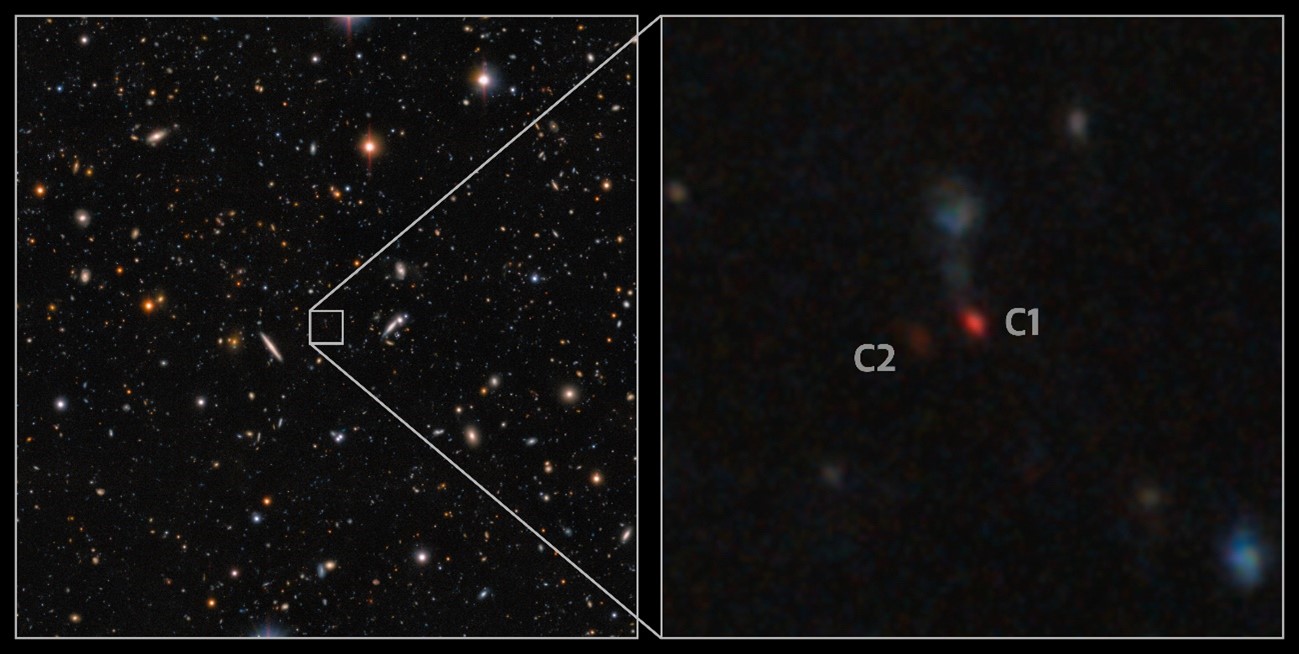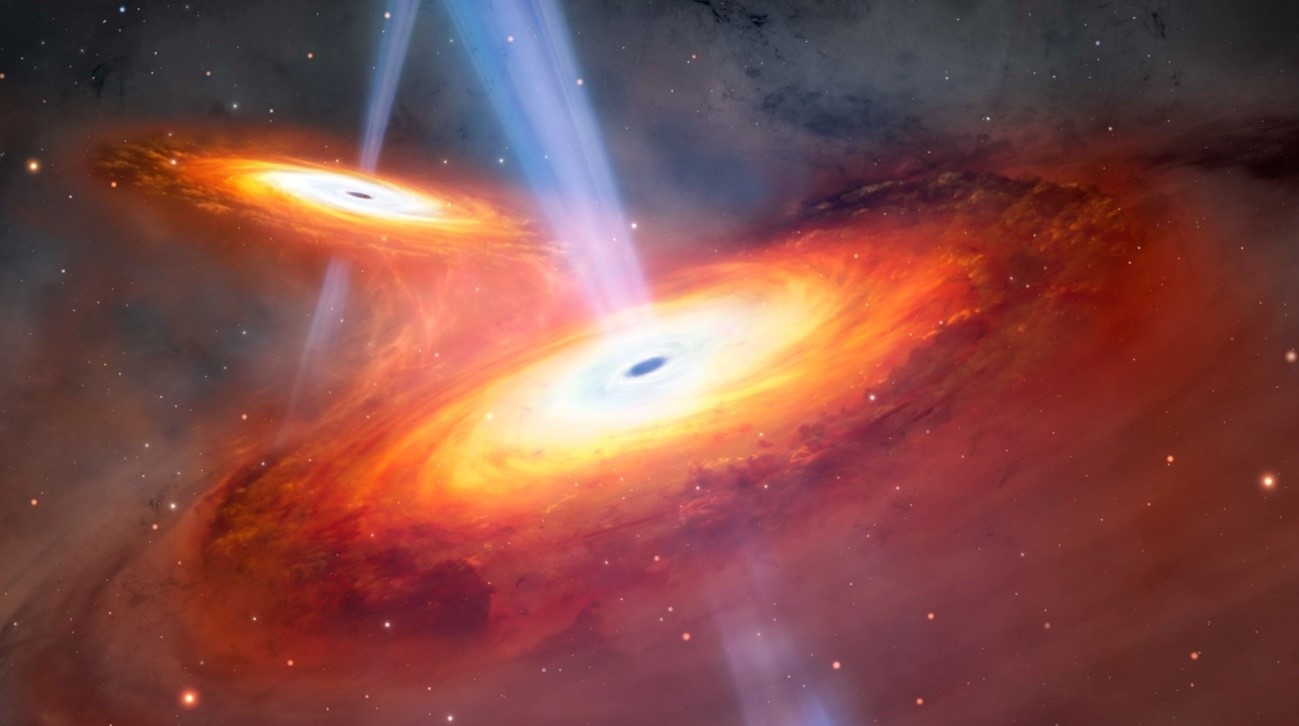Discovery of Twin Black Holes Merging in the Cosmic Dawn
We discovered a pair of supermassive black holes in the cosmic dawn, approximately 12.9 billion light-years away from Earth. The two black holes are shining as quasars, and appear to be undergoing a merger. This discovery is the farthest pair of quasars reported to date. Galaxies and supermassive black holes are believed to grow through frequent mergers, and this discovery provides evidence that such mergers did indeed occur in the very early stages of cosmic history.
When the first stars and galaxies began to shine, their ultraviolet radiation spread throughout the universe, initiating the (re-)ionization of the intergalactic material. This marked the end of the dark ages (the epoch without celestial bodies) and the cosmic dawn, the crucial period leading to the universe we observe today. How did galaxies and the supermassive black holes at their centers evolve during this period? To unravel this major astronomical puzzle, we have been conducting a decade-long search for quasars in the distant universe. Quasars are luminous celestial bodies at the centers of galaxies where supermassive black holes shine brightly as they swallow surrounding material. By exploiting the unique wide-field observing capability of the Subaru Telescope, we have discovered approximately 200 quasars in the cosmic dawn. But until now, no pairs of such quasars had been found.
However, we made a serendipitous discovery while visually inspecting images from the Subaru Telescope. Among the images of candidate quasars, we noticed two adjacent sources that were very red and appeared similar. To confirm whether this pair truly constitutes quasars, we conducted follow-up observations using the Subaru Telescope and the Gemini North Telescope, both on Maunakea, Hawaii. We have successfully confirmed that the two sources are indeed quasars in the cosmic dawn, located 12.9 billion light-years away from Earth. The supermassive black holes powering those quasars are nearly identical in mass, making them “twins”. Detection of structures connecting the two quasars suggests that they are in the process of merging.
The standard cosmology suggests that galaxies grow via frequent mergers. While the existence of merging quasars in the cosmic dawn has long been anticipated, none has been found until now. The present results mark the first confirmation of such a pair, and is a significant discovery for the understanding of how supermassive black holes evolve within merging galaxies.
Reference URL: https://noirlab.edu/public/news/noirlab2415/
Bibliographic Information
Discovery of Merging Twin Quasars at z = 6.05, Yoshiki Matsuoka, Takuma Izumi, Masafusa Onoue, et al., The Astrophysical Journal Letters, 965, id.L4, doi: 10.3847/2041-8213/ad35c7, 2024 (April 5)
Fundings
- Japan Society for the Promotion of Science (JSPS) KAKENHI Grant Number 21H04494
Media
-

The twin quasars, C1 and C2, imaged by the Subaru Telescope
credit : NOIRLab/NSF/AURA/T.A. Rector (University of Alaska Anchorage/NSF NOIRLab), D. de Martin (NSF NOIRLab) & M. Zamani (NSF NOIRLab)
Usage Restriction : Specify the copyright when the image is used. -

Artist’s illustration of most distant pair of merging quasars
credit : NOIRLab/NSF/AURA/M. Garlick
Usage Restriction : Specify the copyright when the image is used.
Contact Person
Name : Yoshiki Matsuoka
Phone : +81-89-927-9579
E-mail : yk.matsuoka@cosmos.ehime-u.ac.jp
Affiliation : Research Center for Space and Cosmic Evolution
